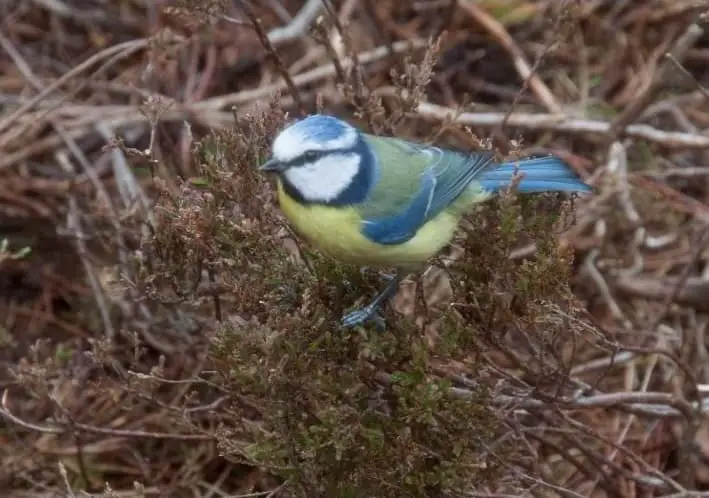You’re probably very familiar with the garden blue tit. It’s energetic personality and bright appearance are hard to miss in most gardens and parks across the UK.
Blue tits are often seen more in the spring, although they stay local all year round. This is because they are making nests, incubating their eggs and feeding their young during this time.
Blue tits begin nesting in early-mid April when the weather begins to get warmer in the UK.
In a similar way to many other common garden birds, blue tits breed from April until June. They mate for life, meaning that, unless their partner dies, a female blue tit’s broods will be fathered by the same male blue tit for all of their life. There are currently over 3.5 million breeding pairs of blue tits in the UK, according to the Royal Society for the Protection of Birds (RSPB).
Their ingrained loyalty means that they’ve earned themselves the nickname “Billy Biter” in the UK, because they often bite and hiss at anyone or anything coming close to their nest.
Blue tit nests are small cup-like structures made from twigs, moss and dead leaves. Female blue tits are the sole nest-makers, and they may also use tree bark and even spiders’ webs to create the perfect nest for their brood. The male blue tit will often be responsible for feeding the female while she is incubating the eggs.
Blue tit nests are often situated inside the nooks and crannies of tree trunks or in man-made birdboxes. They often return to the same blue tit nesting site year after year, unlike other garden birds who avoid doing so because of the risk of predators recognising their spot.
Blue tits are happy to use man-made nesting boxes, and benefit from the security that they offer. It is generally recommended that a small hole-fronted nest box be placed for blue tits, with an entrance hole that is approximately 25 mm in diameter. Blue tits will likely use nest boxes with larger entrance holes, but they risk competing with larger birds such as the great tit for the space.
When figuring out where to place your blue tit nesting box, consider placement within suitable woodland habitat or a garden setting with a suitable tree, hedge or another structure that it can be easily fixed to. The best-positioned blue tit nesting boxes are facing North-East, and are not in direct sunlight for the whole day. Place the box about two metres of the ground, or higher if you have a cat that might try to poach a nestling!
Blue tits famously have a blue crown, which is surrounded by a white border. The scientific name for a blue tit is Cyanistescaeruleus, with ‘caeruleus’ being Latin for ‘dark blue’. The chest of a blue tit is yellow; a result of the high carotene pigment content of their diet. They have white cheeks, outlined with a black line that extends around their eyes.
Blue tits have yellow-green backs, blue wings and a blue tail. They have black bills with a brown tip, which are conical in shape. The shape allows them to feed on insects, spiders and caterpillars. They have dark blue-grey legs and feet, and are generally 12cm long, weigh approximately 11g and have a wingspan of 18cm. They are similar in size to many other garden birds, especially other types of tits.
Young blue tits are more green-brown than blue, and their cheeks are yellow until they reach maturity.
A female and male blue tit are similar in size, but they may differ in appearance only by the vibrancy of the colours. Especially under UV light, males have a brighter yellow chest and more vibrant blue crown.
The eggs of a blue tit are white and glossy in appearance. They are smooth, but often are covered in red-purple spots. A female blue tit nesting will incubate her eggs for up to 15 days before they hatch into nestlings. The nestlings are fed a diet of caterpillars by the female and male blue tit, and will stay in this stage for between 16 and 22 days until they are ready to fly the nest. During this period, they are completely dependent on adult blue tits for food and security.
In summary, blue tits will begin nesting in early-mid April, and it may be as late as August before their last brood of nestlings have successfully flown the nest. During the late summer months, you may not see blue tits as much in your garden due to a scarcity of water or the fact that they are taking advantage of seasonal berries and fruits elsewhere!

